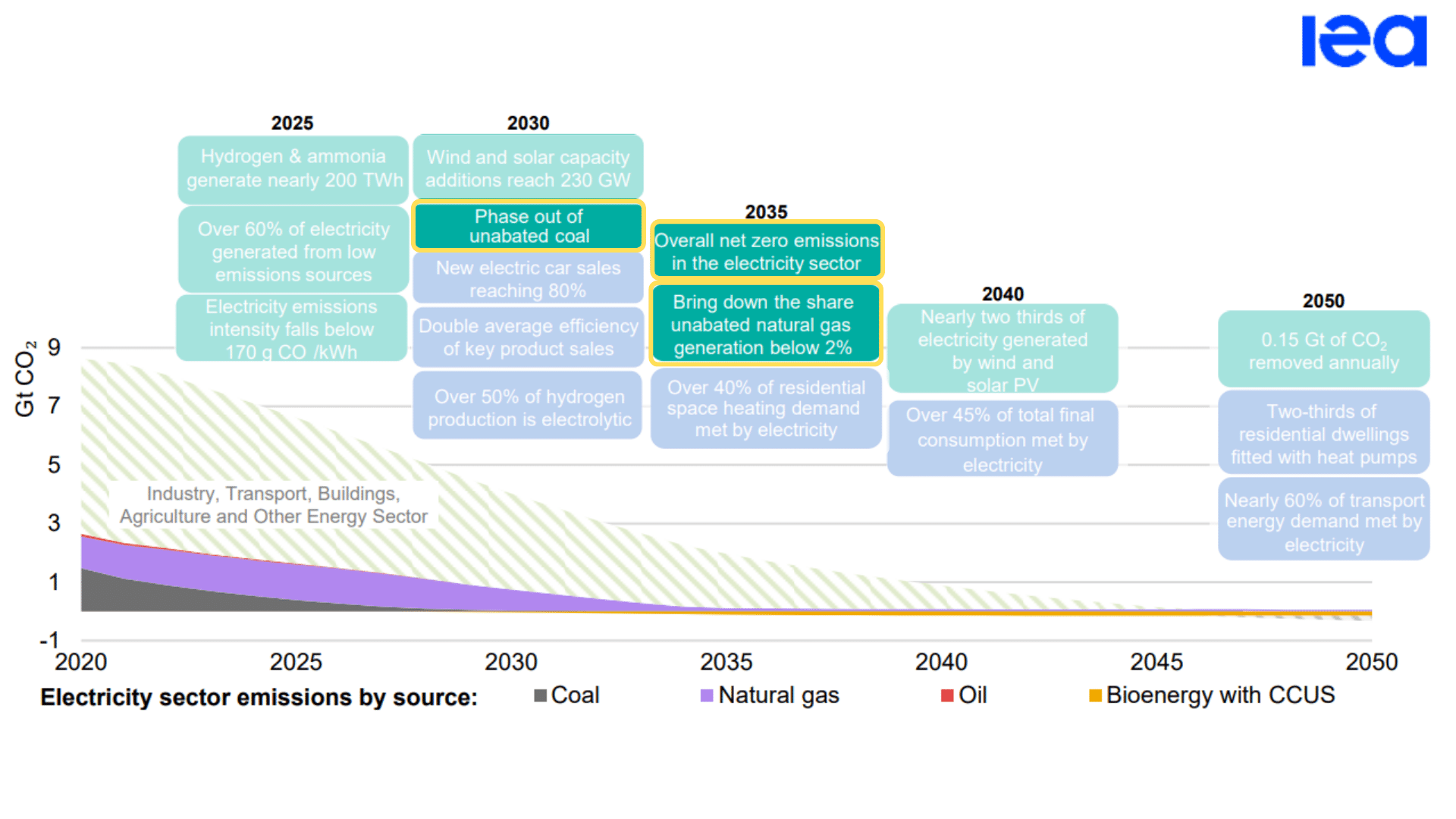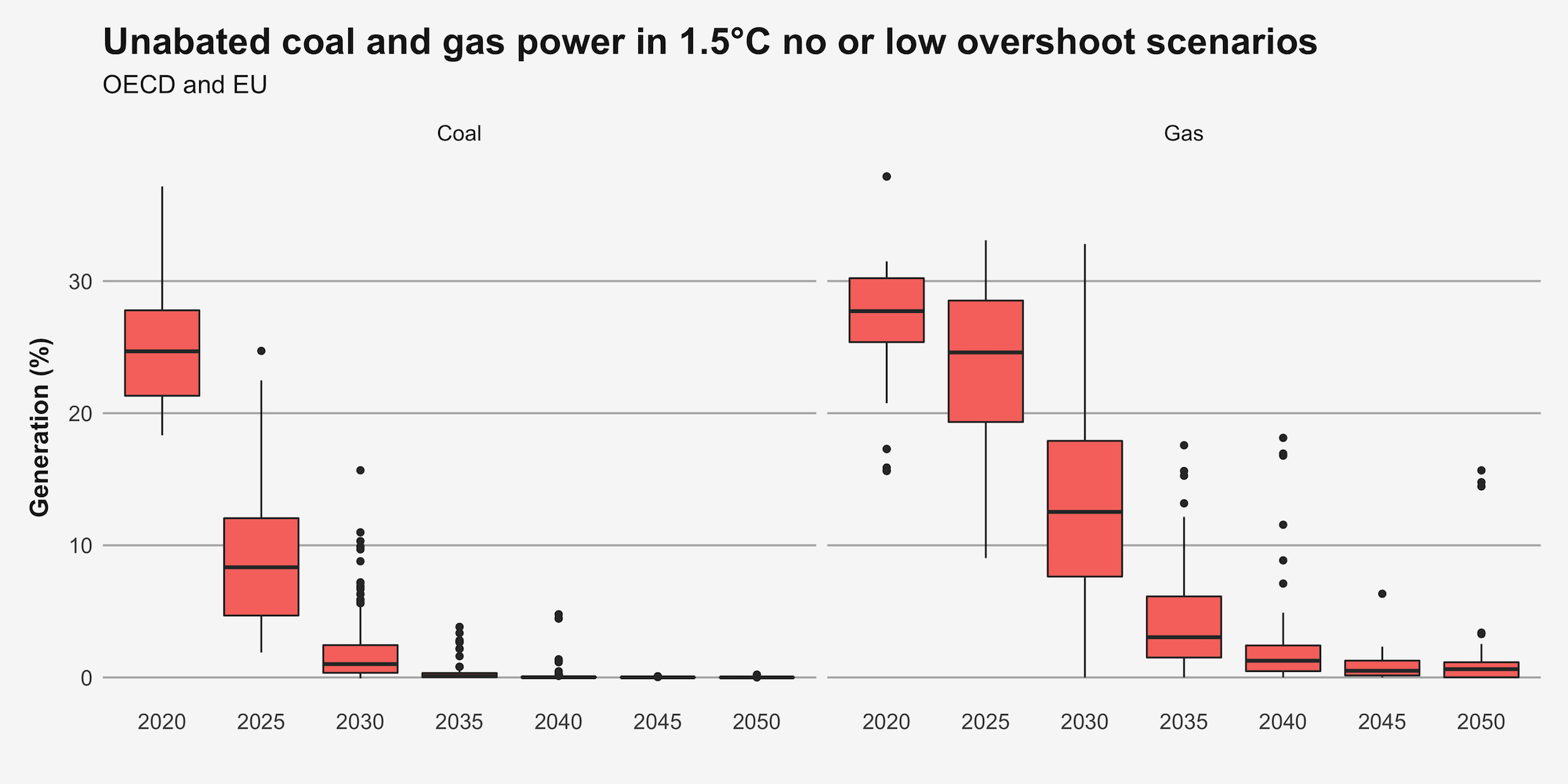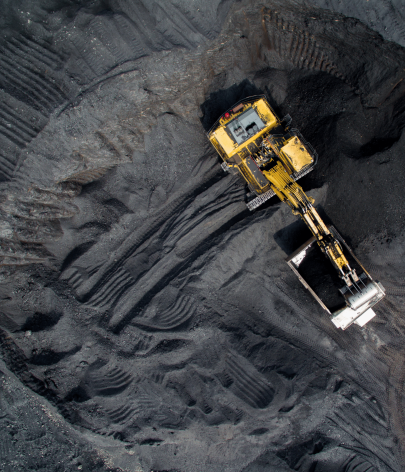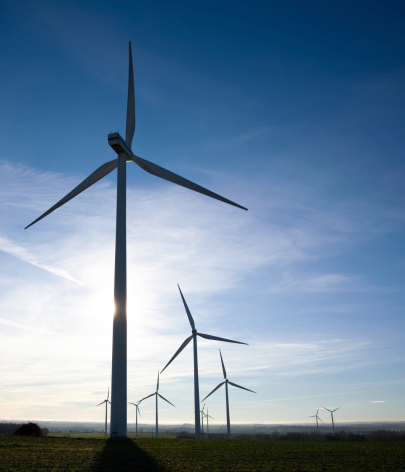
Breadcrumbs
Why Clean Power 2035 means No Coal by 2030
According to analysis from both the IEA and the IPCC, G7 countries need to phase out coal and power their electricity from Clean Energy by 2035 to keep global warming under 1.5 degrees.

Dave Jones
Head of Data Insights
Ember
23 June 2022 | 3 min read
Towards clean power
Last year the IEA was commissioned by the G7 to map out what G7 countries had to do by 2030, 2035, 2040 and 2050 to keep the world on a 1.5 degree pathway.
In their groundbreaking report, the IEA clearly outlined that G7 countries need to phase out unabated coal power by 2030, and at the same time, increase their share of wind and solar power to 42%.
The report shows that by 2035, G7 countries need to adopt a net zero electricity sector, which the IEA defines as only 2% of electricity coming from a back-up supply of unabated gas. Where the G7 refer to a “predominately” clean power system by 2035, from the IEA modelling “predominately” should be therefore understood as 98% clean.
This is also aligned to what the IPCC set out in their latest set of 1.5 degree-aligned scenarios for the OECD. The median of the scenarios shows coal power in 2030 is 1% of OECD electricity mix (left), and unabated gas power is only 3% of OECD’s electricity by 2035 (right). Therefore, the median 1.5 degree-aligned IPCC scenario has 97% of OECD electricity from clean sources in 2035.
Why the G7 is important
The G7 has shown that it is capable of setting the global agenda for our collective energy transition. In the last two years, the G7 set a clear example by ending international coal financing, and pledging to phase out unabated coal and “predominantly” decarbonise their electricity sectors by 2035. Last year, this sent ripples that echoed into the G20 and COP26.
This year, the G7 has the chance to set the standard once again.
Where do G7 Countries Stand
France, Germany, Italy
In response to Russia’s war and the gas crisis, EU countries have raised ambition on getting away from fossil fuels. Italy is aiming for 70% renewables by 2030 and coal phase out by 2025, Germany is now targeting 2035 clean power, with the climate minister reaffirming its commitment to 2030 coal phase out as ‘more important than ever’. France already has a highly decarbonised grid, and has set a coal phase out date of 2024.
With the REPowerEU proposal, the EU will aim to generate 69% of electricity from renewables by 2030. This puts the EU right on track to hit a net zero electricity system by 2035, one which recent Ember analysis shows they can meet “at no extra cost” above stated plans and “without compromising security of supply”.
The UK
The UK is leading the charge to clean energy, with a plan to generate 95% of its electricity from low carbon sources by 2030. This includes plans to expand offshore wind to 50GW by 2030, and increase solar capacity by up to 5 times by 2035. This puts it in a great position to meet the Clean Power 2035 challenge.
The US
President Biden has committed to guiding the US toward 100% clean power by 2035, including a near term target for 30 GW of offshore wind by 2030. While recent months have proved challenging, the President has recently invoked the Defence Production Act to increase production of solar panels, building insulation and heat pumps, and has noted that the US is ready to make a “fundamental turn toward renewable energy”.
Coal power is falling in the US, and although no commitment has been made on coal power phaseout, it’s widely acknowledged that coal power will continue to collapse this decade, on the route to 100% clean power by 2035.
Canada
In 2018, Canada first committed to phase out coal by 2030, but there is some risk that this could be offset by expanding fossil gas generation. However, earlier this year the Government launched nation-wide consultations to develop Canada’s Clean Electricity Standard (CES) with the clear aim to drive progress towards a net-zero electricity grid by 2035.
Japan
Presently, 25% of Japan’s electricity comes from renewables, with a current plan to increase this to 38% by 2030. This is just short of where the IEA says G7 members need to be, but according to recent Ember analysis, Japan has an untapped opportunity to expand its renewable energy capacity through solar and offshore wind.
The challenge is our greatest opportunity
The G7 now has the opportunity to unite against energy insecurity through a collective push for a clean electric future.
No-one is saying it will be easy. It will require massive amounts of collective investment, and unprecedented economic and technological cooperation. But if G7 nations are brave enough to take on this challenge, they will be at the forefront of securing the jobs and industries of a safer, secure, renewable electric future.
Evan Gach Program Coordinator at Kiko Network
Japan committing to a predominantly decarbonized power sector by 2035 and a phase-out of coal-fired power at the G7 is a welcome step forward, but realizing these commitments will require a detailed roadmap to decarbonization.
Ysanne Choksey Policy Advisor, E3G
Germany is currently making decisions on the back foot. We welcome the reiteration that the 2030 coal phase out date will not be affected; but other G7 countries heavily reliant on coal and gas should learn from Germany's experience that transitioning energy grids from fossil fuels needs preparatory work to accelerate quickly now to avoid bitter trade offs when the geopolitical waters get choppy.





According to analysis from both the IEA and the IPCC, G7 countries need to phase out coal by 2030 and power their electricity from Clean Energy by 2035 to keep global warming under 1.5 degrees.